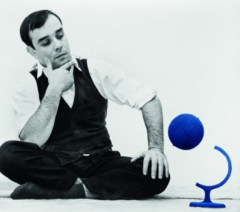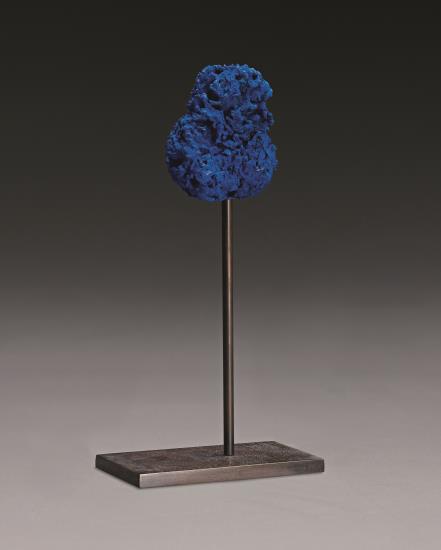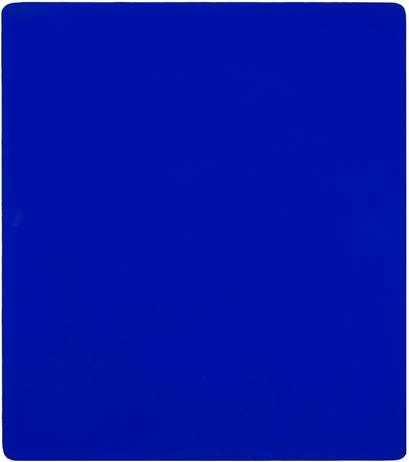Yves
Klein
Biography

Yves Klein was a French Conceptual artist with a wide-ranging and highly influential practice. Perhaps best remembered for his creation of a vivid shade of blue, he began creating his monochrome series in the 1950s by developing and patenting his own signature hue known as IKB, or International Klein Blue. For his Anthropométries series the artist employed nude models to act as "living brushes" and paint canvases with their bodies covered in Klein Blue. "Blue suggests the sea and sky, and they, after all, are in actual, visible nature what is most abstract," he mused. Born on April 28, 1928 in Nice, France, Klein became interested in Eastern mysticism as a 20 year old and later studied Judo in Japan before returning to France. The artist cofounded the Nouveau Réalisme movement in 1960, the same year he produced his hallmark work Leap into the Void. Other original members of Nouveau Réalisme included Arman, Jean Tinguely, and François Dufrêne. Klein's blend of mysticism and performance art contrasted with the Abstract Expressionist and Pop Art sensibilities of the time. The artist’s brief but prolific life ended with his untimely death from a heart attack— thought to be contributed to by his use of amphetamines—at the age of 34 on June 6, 1962 in Paris, France. Today his works are held in the collections of The Museum of Modern Art in New York, the Tate Gallery in London, the Centre Georges Pompidou in Paris, and the National Gallery in Washington, D.C., among others.
Works

Petit Eponge SE 253, c. 1961

Untitled Blue Monochrome, 1961

Petit Eponge SE 253, c. 1961

Untitled Blue Monochrome, 1961